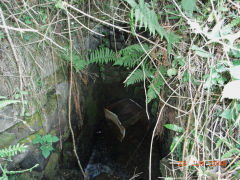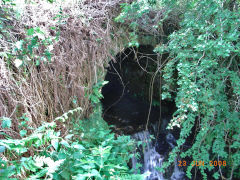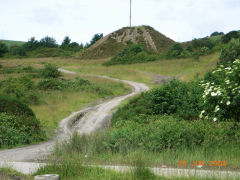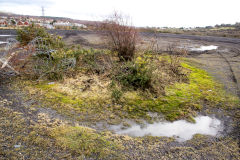British Ironworks
British Ironworks - SO 2573 0367
The 'British Iron Co' started work on the site in 1825, with production beginning in 1827. In 1843 the company became the 'New British Iron Co' being taken over by the 'Ebbw Vale Iron Co' in 1852. Pig iron production ceased in 1876 with all production stopping in 1881. 12 furnaces with coke and calcining ovens were planned but only 6 built. Parts of the back wall and coke ovens survive, along with the office block, now roofless, as does the beam engine pump house of 1845, and its chimney base, from the British Ironworks Colliery.
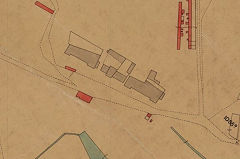
British Ironworks, 1843
|
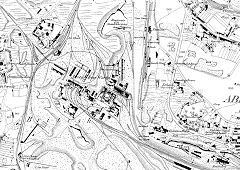
British Ironworks, 1880
|
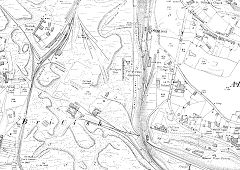
British Ironworks, 1901
|
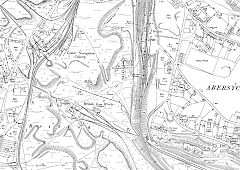
British Ironworks, 1920
|

The British Ironworks
|
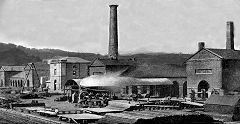
The British Ironworks
|
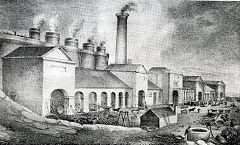
The British Ironworks
|

The British Ironworks
|
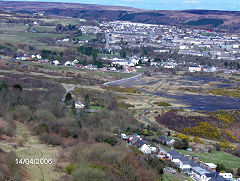
Panorama of the Ironworks site
|
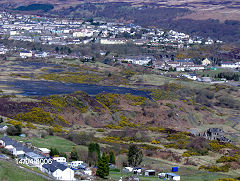
Panorama of the Ironworks site
|
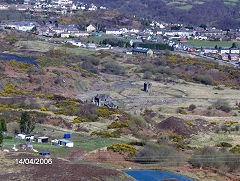
Panorama of the Ironworks site
|
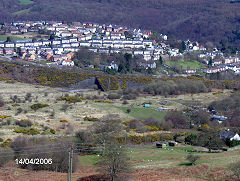
Panorama of the Ironworks site
|
Blast Furnaces and Coke Ovens - SO 2571 0371
Little remains of the ironworks itself but the back wall of the blast furnaces and coke ovens can still be found.
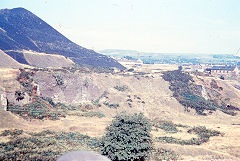
Ironworks blast furnaces, c1960s
|
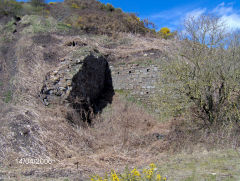
Ironworks blast furnaces
|
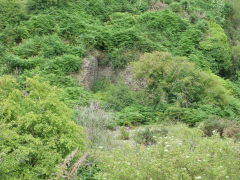
Ironworks blast furnaces
|
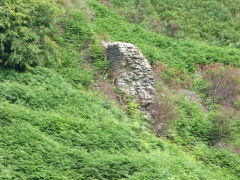
Ironworks blast furnaces
|
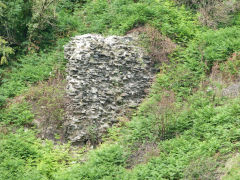
Ironworks blast furnaces
|
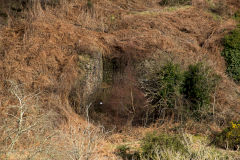
Ironworks blast furnaces
|
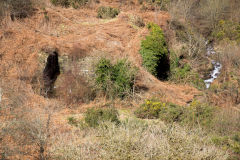
Ironworks blast furnaces
|
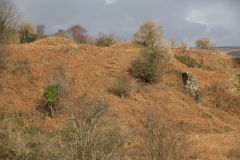
Ironworks blast furnaces
|
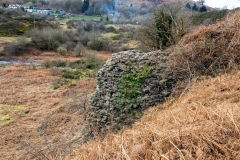
Ironworks blast furnaces
|
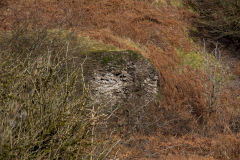
Ironworks coke ovens
|

Ironworks coke ovens
|
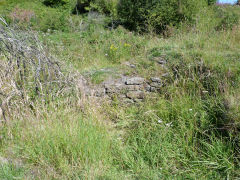
Stonework near the coke ovens
|
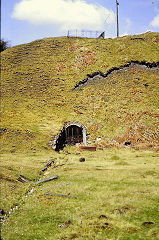
Drainage level and mine shaft
|
|
|
|
The Engine House - SO 2582 0367
The engine house is probably the most promonent survivor of the ironworks site and dates from 1845. It contained the beam pumping engine for the drainage of the adjacent mine workings.
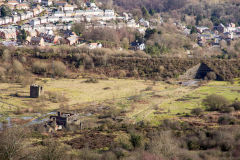
Engine house and office block
|
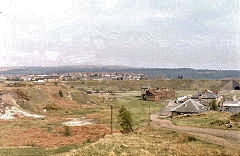
Ironworks engine house
|
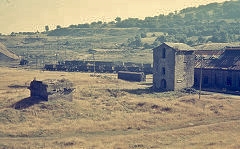
Ironworks engine house, c1960s
|

Ironworks engine house, c1960s
|
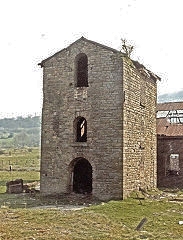
Ironworks engine house, c1960s
|
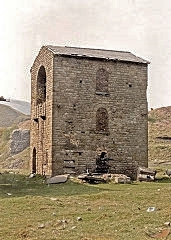
Ironworks engine house, c1960s
|
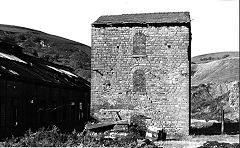
Ironworks engine house
|

Ironworks engine house
|
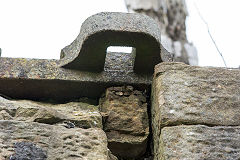
Ironworks engine house detail
|
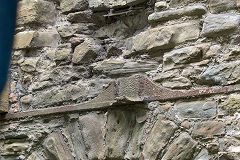
Ironworks engine house detail
|
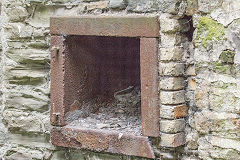
Ironworks engine house detail
|
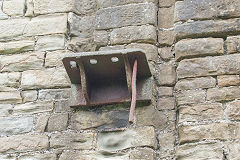
Ironworks engine house detail
|
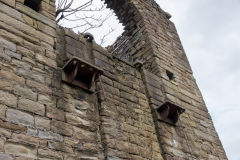
Ironworks engine house detail
|
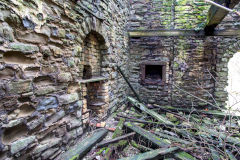
Ironworks engine house interior
|
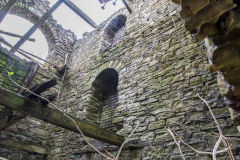
Ironworks engine house interior
|
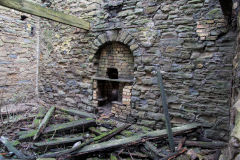
Ironworks engine house interior
|
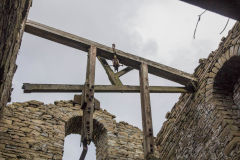
Ironworks engine house interior
|
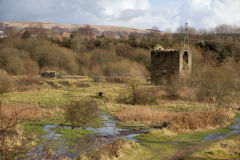
Engine house and chimney
|

Engine house and chimney
|
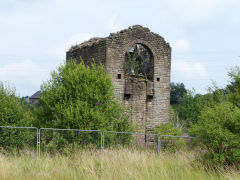
Ironworks Engine house
|
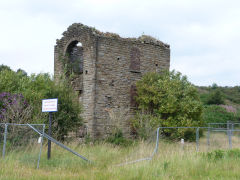
Ironworks Engine house
|

Engine house and chimney
|
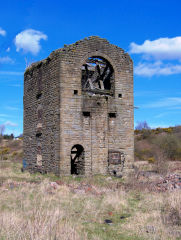
Ironworks engine house
|
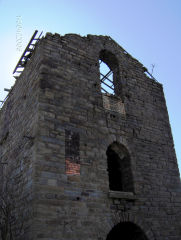
Ironworks engine house
|
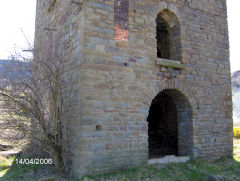
Ironworks engine house
|
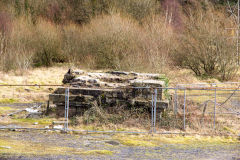
Engine house chimney base
|
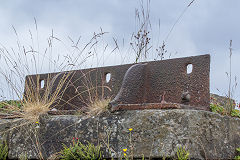
Engine house chimney base
|
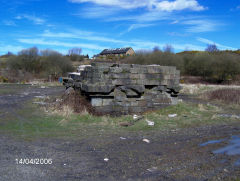
Engine house chimney base
|
The Office Block - SO 2572 0361
The office block is slowly crumbling away but still contains some interesting relics. Experiments with a reverbatory air-furnace for re-melting cast iron and electrical apparatus took place and there appear to be the remains of WW2 defences, an anti-aircraft battery perhaps and what appears to be an air-raid shelter complete with metal bunks.
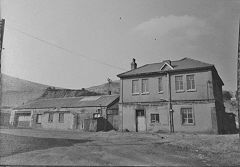
Office block, c1970
|

Office block, c1970
|
|

Office block in 1973
|
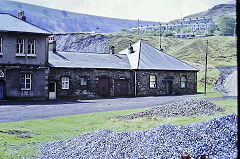
Office block in 1973
|
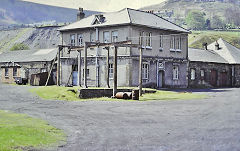
Office block in 1973
|
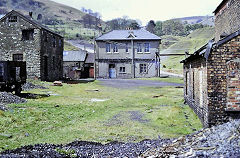
Office block in 1973
|
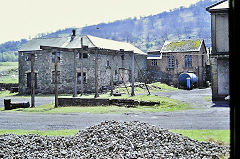
Office block in 1973
|
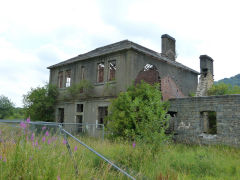
British Ironworks office block
|
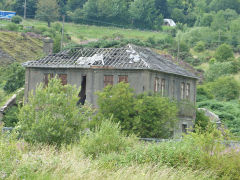
British Ironworks office block
|
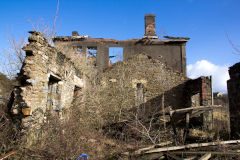
British Ironworks office block
|
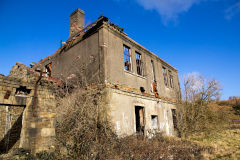
British Ironworks office block
|
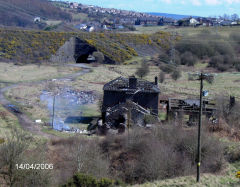
British Ironworks office block
|
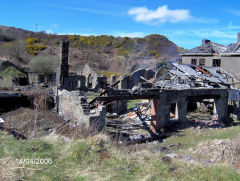
British Ironworks office block
|
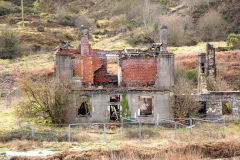
British Ironworks office block
|
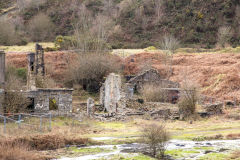
British Ironworks office block
|
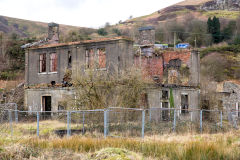
British Ironworks office block
|

British Ironworks office block
|
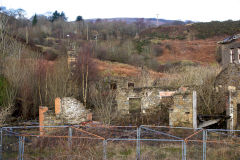
British Ironworks office block
|
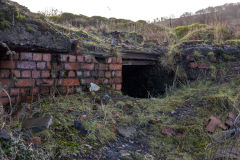
British Ironworks office block
|

British Ironworks office block
|

British Ironworks office block
|
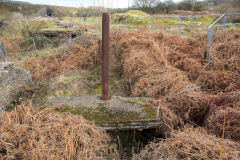
British Ironworks office block
|
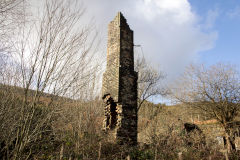
British Ironworks office block
|
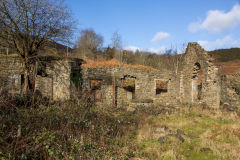
Ironworks air furnace site
|
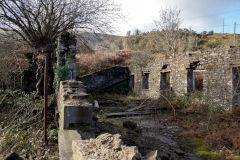
Ironworks air furnace site
|
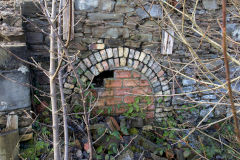
British Ironworks office block
|
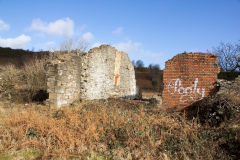
British Ironworks office block
|
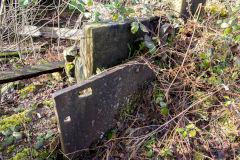
British Ironworks office block
|

British Ironworks office block
|
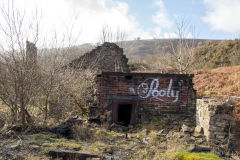
Ironworks air raid shelter?
|
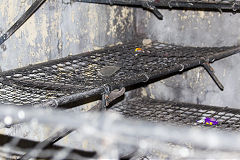
Ironworks air raid shelter?
|
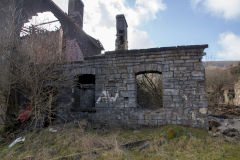
British Ironworks office block
|
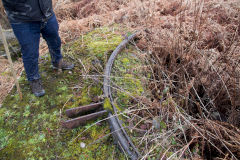
British Ironworks office block
|
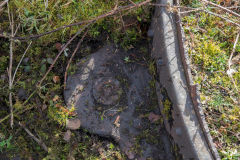
British Ironworks office block
|

British Ironworks office block
|
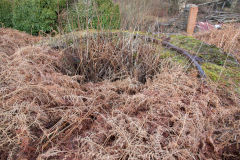
British Ironworks office block
|
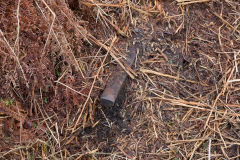
British Ironworks office block
|

British Ironworks office block
|
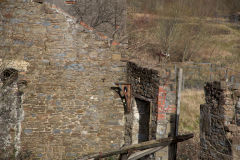
British Ironworks office block
|
The Open-air Swimming Pool - SO 2585 0363
The open-air swimming pool was built by the local council in the 1920s just above the office block. It was still used up to the 1980s but now filled in. Look carefully and you will see the blue tiles of the edge of the pool.
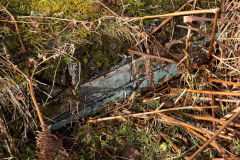
The open-air swimming pool
|
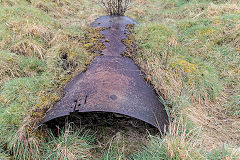
A tank at the swimming pool
|
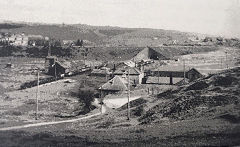
The open-air swimming pool
|

The open-air swimming pool
|
Watercourses under the site
Underneath the ironworks site there are a number of watercourses and every so often they need inspection by Mines Surveyors. I've been given these photos of their inspections over the past few years. The air quality is very bad so these inspections are brief and irregular.
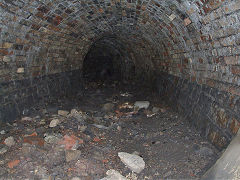
British Ironworks watercourses
|
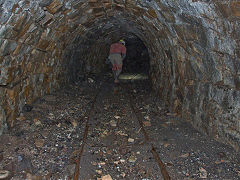
British Ironworks watercourses
|
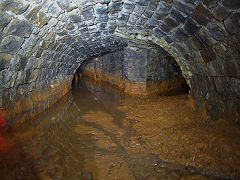
British Ironworks watercourses
|

British Ironworks watercourses
|
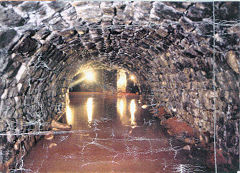
British Ironworks watercourses
|
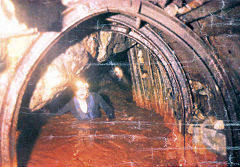
British Ironworks watercourses
|
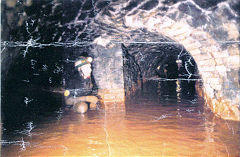
British Ironworks watercourses
|
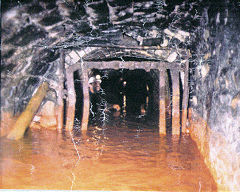
British Ironworks watercourses
|
British Village
British Village - SO 2544 0360
The building of British Village began in around 1825 to provide housing for the ironworks and surrounding collieries. There were grand plans to re-develop and modernise the village in the 1960s but only Elizabeth Row was completed, the rest of the village being demolished.
Walter Clough lived in Talywain whilst working at Girling in the 70's. His photos are from 1977 when he was just 29. He used to walk the dog over the British and became quite interested and tried to imagine what it would have been like in its heyday. The sketch of where the terraces used to be was from talking to older people in the pub on a Sunday lunch time.
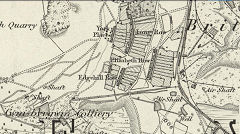
British village 1879, South
|
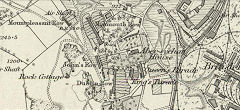
British village 1879, North
|

British village, 1901
|

Plan of British village, 1977
|
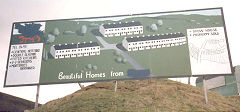
How it might have looked, c1980
|
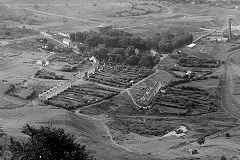
British Village in 1950
|
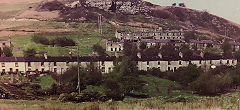
British Village, c1970
|
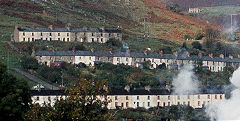
British Village, c1970
|
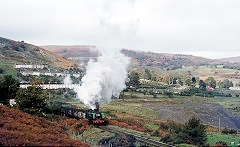
British Village, c1970
|
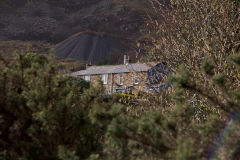
East View, British Village
|
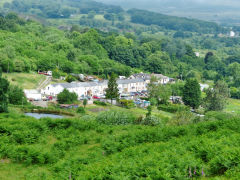
The only survivor, Elizabeth Row
|
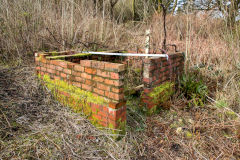
A brick box near Elizabeth Row
|
Big Edge Hill and Edgehill Row - SO 2533 0343
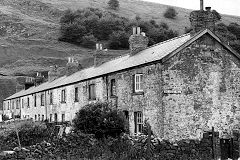
Big Edge Hill, c1970s
|
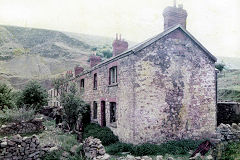
Big Edge Hill, c1970s
|
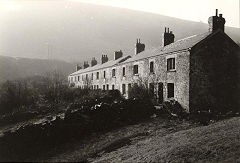
Big Edge Hill, British village
|
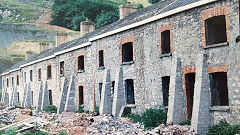
Big Edge Hill, British village
|
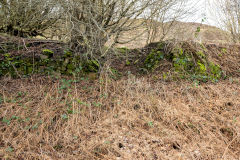
Big Edge Hill, British village
|
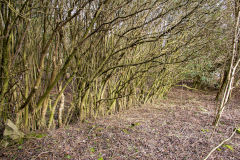
Big Edge Hill, British village
|
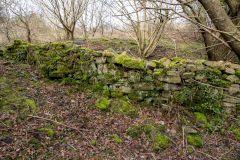
Big Edge Hill, British village
|
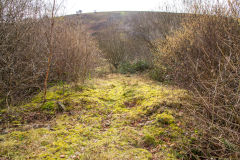
Big Edge Hill, British village
|
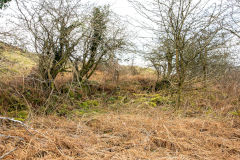
Edgehill Row, behind Big Edge Hill
|
John's Row, Kings Parade and Dublin Row - SO 2533 0372
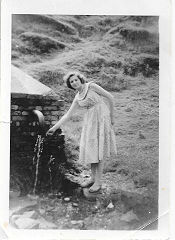
Johns Row spout, British village
|

Johns Row, British village
|
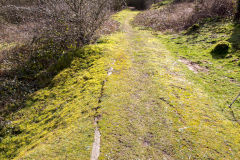
Johns Row, British village
|
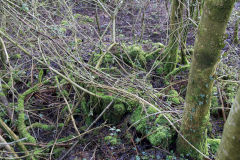
Dublin Row, British village
|
|
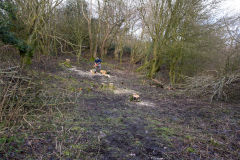
Kings Parade, British village
|
Monmouth Row and Mount Pleasant Row - SO 2533 0380
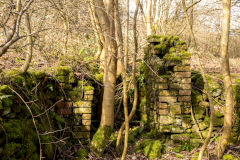
Monmouth Row, British village
|
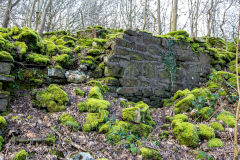
Monmouth Row, British village
|
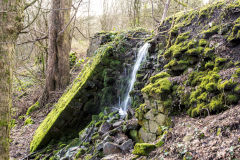
Monmouth Row, British village
|
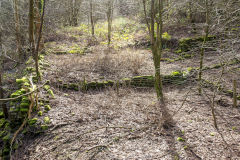
Monmouth Row, British village
|
|
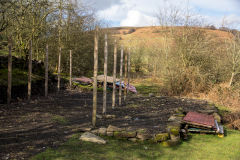
Mount Pleasant Row, British village
|
Norfolk Row and Ty Ffynnon, originally Long Row - SO 2537 0354
Ty Ffynnon was a large three-storey property at the North end of Norfolk Row which may wekk have been the under-manager's house.
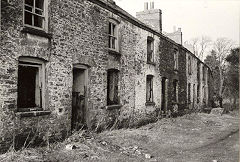
Norfolk Row, British village, 1977
|
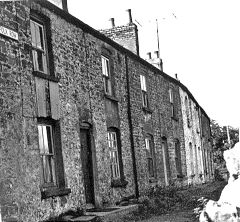
Norfolk Row, British village
|
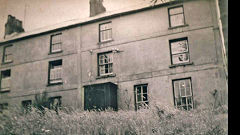
Norfolk Row, British village
|
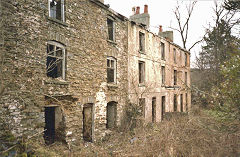
Ty Ffynnon, British village c1980
|
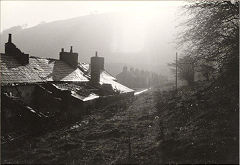
Norfolk Row, British village, 1977
|
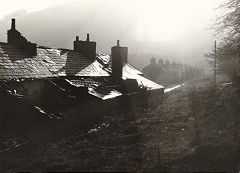
Norfolk Row, British village, 1977
|
|
|
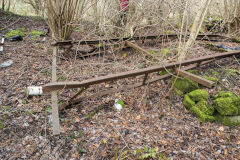
Norfolk Row, British village
|
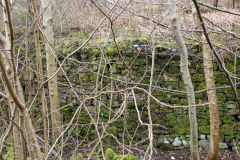
Norfolk Row, British village
|
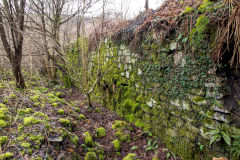
Norfolk Row, British village
|
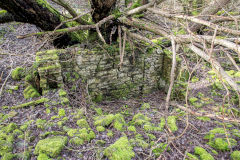
Norfolk Row, British village
|
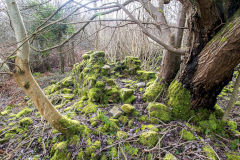
Norfolk Row, British village
|
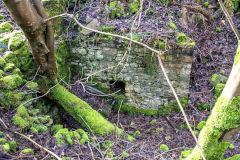
Ty Ffynnon, British village
|
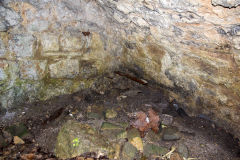
Ty Ffynnon, British village
|
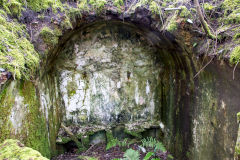
Ty Ffynnon, British village
|
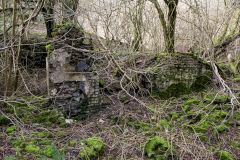
Ty Ffynnon, British village
|
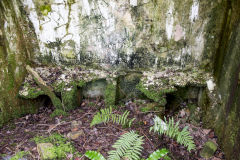
Ty Ffynnon, British village
|
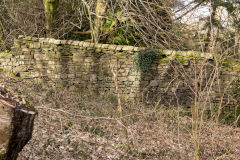
Ty Ffynnon, British village
|
|
York Place - SO 2531 0355
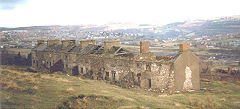
York Place c1980, British village
|
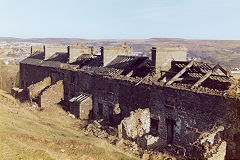
York Place, c1981
|

York Place, c1981
|
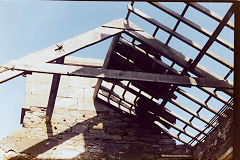
York Place, c1981
|
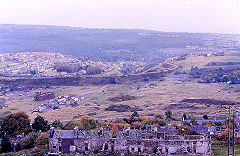
York Place and Big Arch, c1981
|
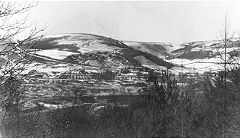
General view from Lasgarn, c1981
|
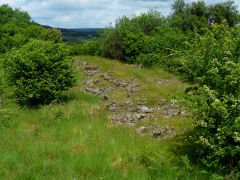
York Place, British village
|
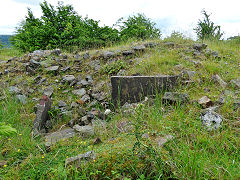
York Place, British village
|
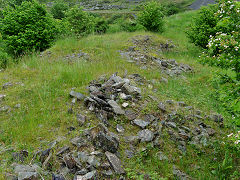
York Place, British village
|
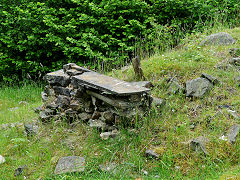
York Place, British village
|
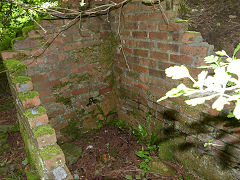
York Place, British village
|

York Place, British village
|
Abersychan House - SO 2542 0382
Abersychan House may well have been the ironworks manager's house and in 1901 Llewelyn Llewelyn Esq JP lived here. Little remains now but the culvert under the house is a curious survivor. The original road to the village can be followed from the Llanhilleth Road junction, first crossing the Cwmsychan Colliery tramway which is now a stream. Then over a bridge over a watercourse which was the site of the original road junction, before passing the gates to the yard and stables of Aberychan House.
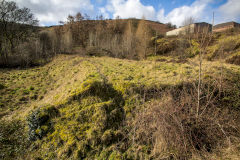
Cwmsychan tramway bridge
|
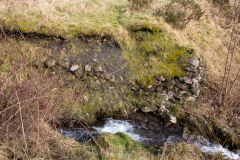
The road from tramway bridge
|
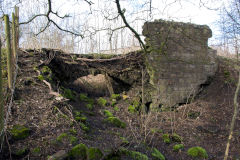
Bridge beside Abersychan House
|
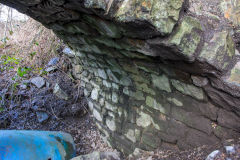
Bridge beside Abersychan House
|
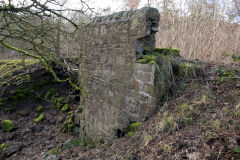
Bridge beside Abersychan House
|
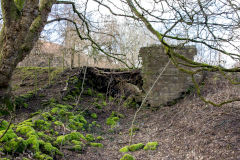
Bridge beside Abersychan House
|

Abersychan House yard gateway
|
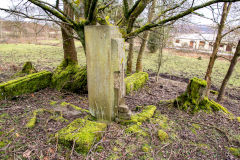
The site of Abersychan House
|

Culvert at Abersychan House
|
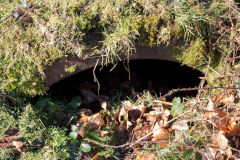
Culvert at Abersychan House
|

Culvert at Abersychan House
|
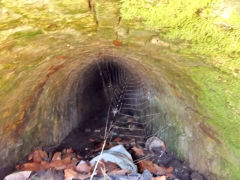
Culvert at Abersychan House
|
Oaktree Cottage and Whitehall Cottage - SO 2531 0369
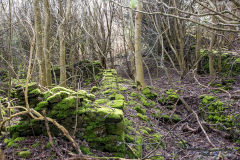
Oaktree Cottage, British village
|
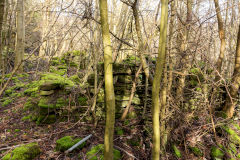
Oaktree Cottage, British village
|

Oaktree Cottage, British village
|
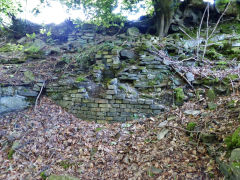
Whitehall Cottage, British village
|
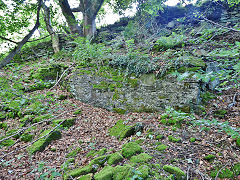
Whitehall Cottage, British village
|
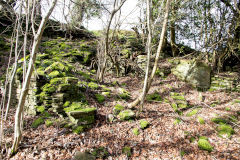
Whitehall Cottage, British village
|
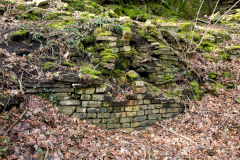
Whitehall Cottage, British village
|
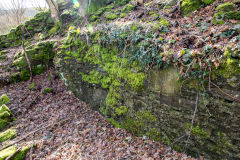
Whitehall Cottage, British village
|
Rock Cottage - SO 2528 0372
Rock Cottage was just below the quarry and was occupied by Edward Clancey and his family when the old photo was taken.
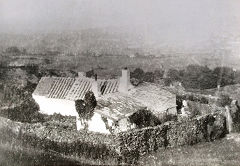
Rock Cottage
|
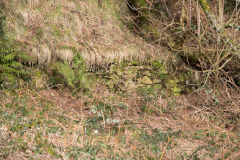
Rock Cottage
|
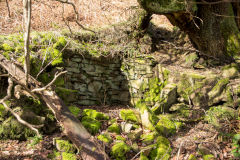
Rock Cottage
|
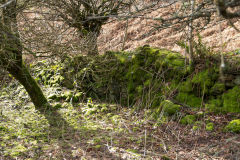
Rock Cottage
|
The Talywain Railway
The Talywain Railway originally served the local collieries as far as Llanerch Colliery (closed c1947) in Cwm Nantddu. Blaenserchan Colliery opened in 1890 and was served by the GWR Cwm Nantddu branch from Pontnewynydd. After a landslip c1947, the Talywain Railway was extended to serve Blaenserchan too. Blaenserchan Colliery ceased coal-winding in 1969 and the railway closed on 3rd April 1970. The locoshed site was used for landsale until 1974.
The last locos to operate the line were :-
'Illtyd', AB 2331/52, new in 1952, cut up on site in 1975.
'Llewellyn', HE3817/54, new in 1954, to Hafodyrynys Colliery in 1971.
'Ebbw', HC 1740/43, from Blaenavon in 1959, cut up in 1971.
'Islwyn', AB 2332/52, from Tirpentws Colliery in 1960, cut up on site in 1975.
'7754', NBQ 24042/30, GWR pannier tank from Elliott Colliery in 1968, to Mountain Ash Railway in 1970.
This is a photographic journey up the line from Big Arch to Blaenserchan with grateful thanks to the many people who supplied the photos.
Big Arch and the Exchange Sidings
Early residents of the loco sheds
Some of the older locomotives that used to work the Talywain Railway.
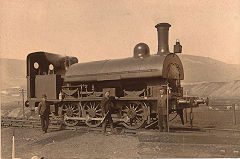
'Blaenserchan', SS 4632 of 1900
|
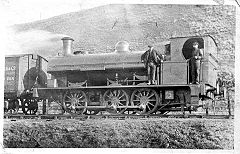
'Blaenserchan', SS 4632 of 1900
|
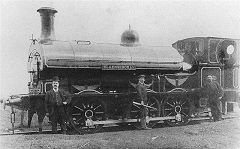
'Blaenserchan', SS 4632 of 1900
|
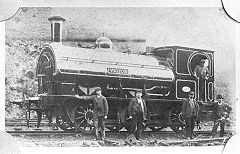
'Victor', SS 2363 of 1873
|
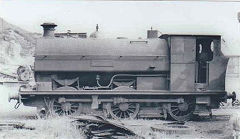
'Vulcan', HC 768 of 1906
|
|
Big Arch loco shed and wagon works
The area in front of the old furnaces became the site of the main loco shed, wagon repair shops and the main engineering facility for the Talywain Railway, which closed in 1970. The last loco to remain was 'Islwyn' which was finally scrapped here in 1975. From Big Arch the line led up to the exchange sidings and the man line to Blaenserchan
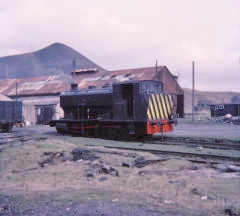
Big Arch shed, 'Islwyn', 1967
|
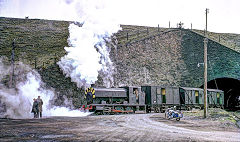
Big Arch shed, 'Illtyd', 1967
|
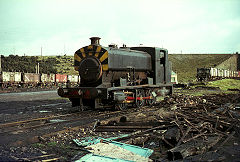
Big Arch shed, 'Islywn', 1968
|
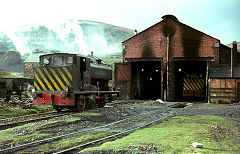
Big Arch shed, 'Islywn', 1968
|
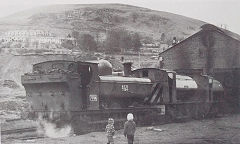
Big Arch with '7754' and 'Llewellyn'
|
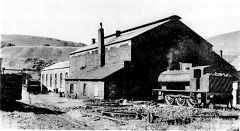
Big Arch in the 1960s
|
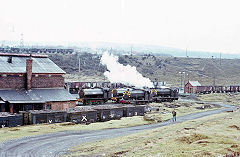
Big Arch in the 1960s
|

Big Arch in the 1960s
|

Big Arch in 1973
|

Big Arch in 1973
|
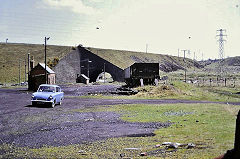
Big Arch in 1973
|
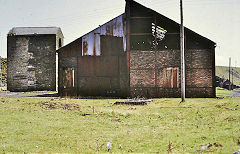
Big Arch wagon repair shops, 1973
|
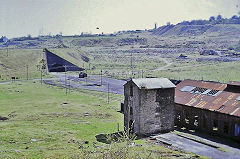
Big Arch wagon repair shops, 1973
|
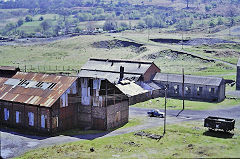
Big Arch wagon repair shops, 1973
|
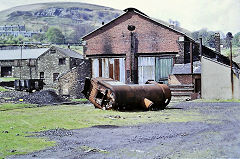
Big Arch loco shed, 1973
|
|
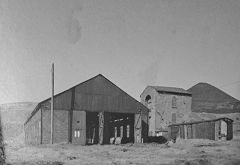
Big Arch in the 1970s
|

Big Arch in the 1970s
|
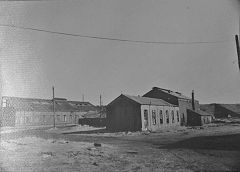
Big Arch in the 1970s
|
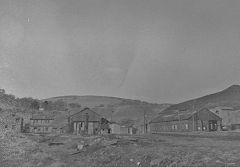
Big Arch in the 1970s
|
The Exchange Sidings
The exchange sidings with the BR line at Talywain were at the top of a steep incline from the loco sheds at Big Arch. Luckily only light engines and wagons for the repair shops or the landsale yard used it. A gentler access line ran along 'The Promenade' on the other side of Big Arch.
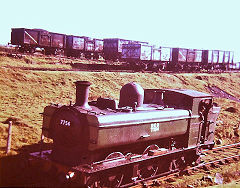
Exchange sidings, '7754', c1960s
|
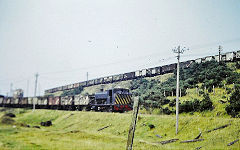
Exchange sidings, c1960s
|

A mishap at the exchange sidings
|
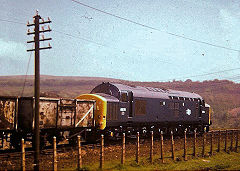
Exchange sidings, BR '6878', 1973
|
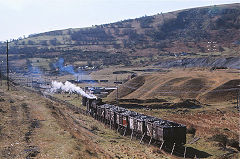
Exchange sidings, c1960s
|

Exchange sidings, c1960s
|
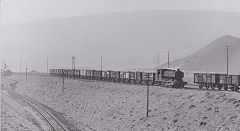
Exchange sidings, 1972
|
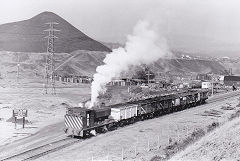
Exchange sidings, 1972
|
Up to Lower Navigation Colliery
Originally known as Abersychan Big Pit, Lower Navigation Colliery was sunk by 1873 or around 1880s. It closed for production on nationalisation in 1947 and completely in 1954 and then demolished. The once prominent tip behind it has been removed leaving an unuseable area of rough ground. The pumping station is a few hundred yards away and still exists (just). Castle Wood was the junction of the lines to the exchange siding and down to Big Arch.
Farm Road and Castle Wood
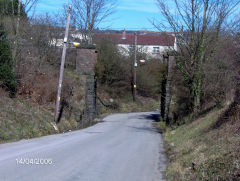
Farm Road bridge abutments
|
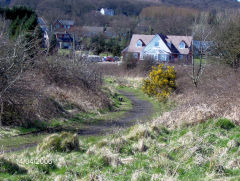
Trackbed towards Castle Wood
|
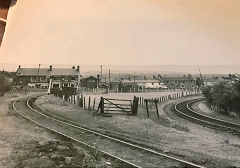
Trackbed towards Castle Wood
|
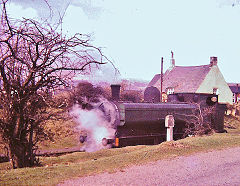
'7754' near Castle Wood
|
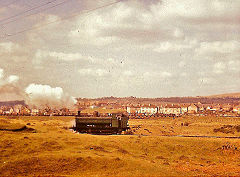
'7754' near Castle Wood
|
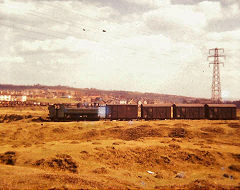
'7754' near Castle Wood
|
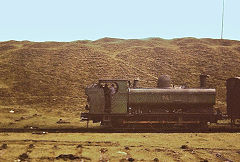
'7754' near Castle Wood
|
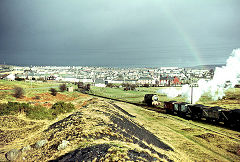
'Llewellyn' near Castle Wood
|
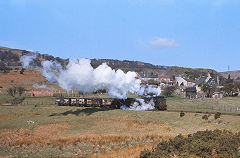
Near Castle Wood
|
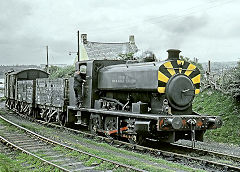
'Illtyd' at Castle Wood
|
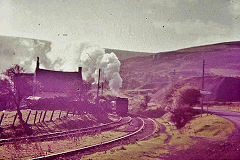
Near Castle Wood
|
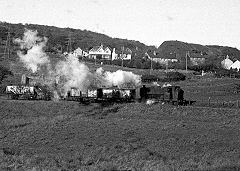
'Islwyn' near Castle Wood
|
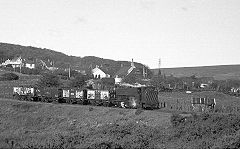
'Islwyn' near Castle Wood
|
|
|
|
Lower Navigation Colliery
By the time these photos were taken, Lower Navigation Colliery had long been demolished but odd walls and arches remained. The prominent tip was removed in the late 1970s.
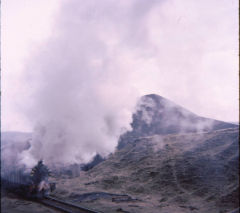
'Ebbw' at the colliery site, 1967
|

'Ebbw' at the colliery site, 1967
|
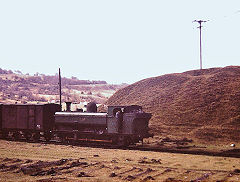
'7754' at the colliery site
|
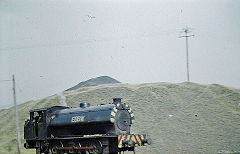
'Ebbw' at the colliery site
|
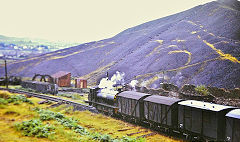
'Ebbw' at the colliery site
|

'Ebbw' at the colliery site
|

'Islwyn' or 'Illtyd' at the colliery
|
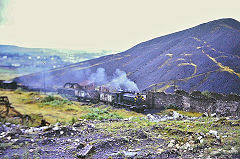
'Islwyn' or 'Illtyd' at the colliery
|
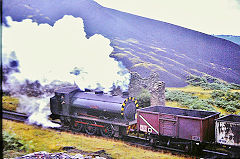
'Llewellyn' at the colliery site
|
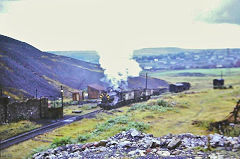
'Llewellyn' at the colliery site
|
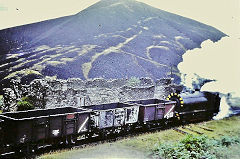
'Llewellyn' at the colliery site
|
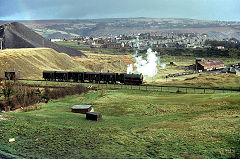
'Llewellyn' at the colliery site
|
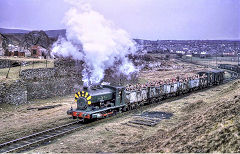
'Islwyn' or 'Illtyd' at the colliery
|
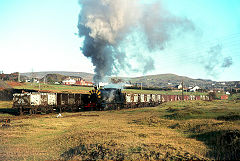
'Islwyn' at the colliery, 1969
|
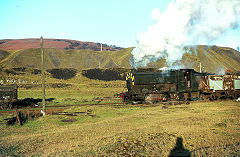
'Islwyn' at the colliery, 1969
|
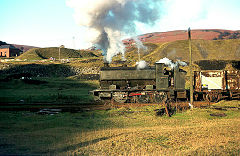
'Islwyn' at the colliery, 1969
|

Lower Navigation Colliery tips
|
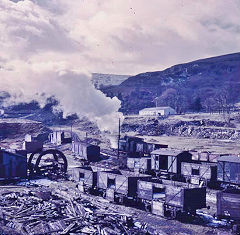
Lower Navigation Colliery yard
|
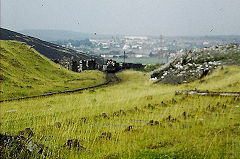
View through the colliery ruins
|

'7754' at the colliery ruins, 1969
|
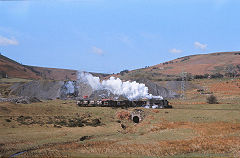
'Islwyn' or 'Illtyd'' at the colliery ruins
|
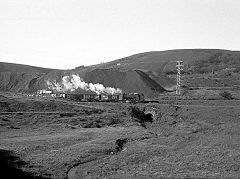
'Islwyn' or 'Illtyd'' at the colliery ruins
|
|
|
British Village to Rhiw Frank
The British and Pant Glas
The railway passes below 'Elizabeth Row', the only surviving row of the 'British' village, once a thriving community of a dozen rows of houses. The incline from Cwmbergwm Colliery ended at a loading bank beside the line here. The line then carried on through relatively open countryside below the Pant Glas slip, an old landslide.
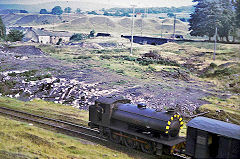
'Llewellyn' approaching the village
|
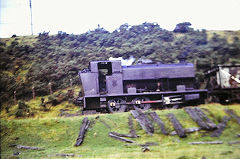
Passing 'British' village
|

'Llewellyn' passing The British
|
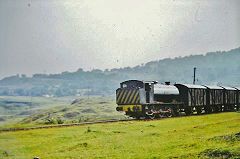
'Llewellyn' passing The British
|
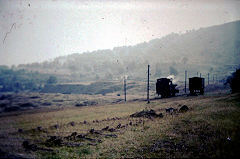
Passing the British village
|
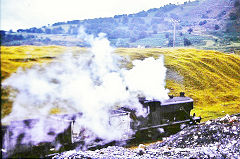
Near Cwmbergwm
|
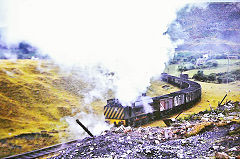
Near Cwmbergwm
|
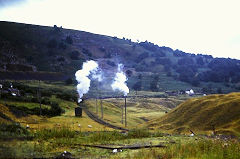
Near Cwmbergwm
|

Near Cwmbergwm
|
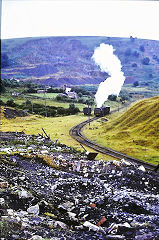
Near Cwmbergwm
|
|
|
Rhiw Frank level crossing
An ancient road, 'Rhiw Frank', crosses the line to reach the the valley ridgeway. This would have been the main route out of valley before the Industrial Revolution and may even have Roman connections. This is the point at which the railway turns up Cwm Nantddu to get to Llanerch and Blaenserchan.
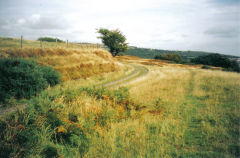
Railway at Rhiw Frank
|
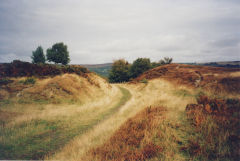
Railway at Rhiw Frank
|
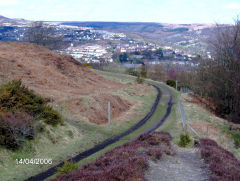
Railway at Rhiw Frank
|
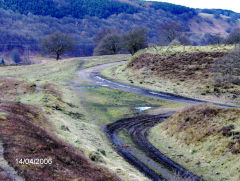
Railway at Rhiw Frank
|
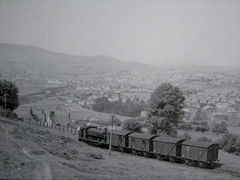
Near Rhiw Frank
|
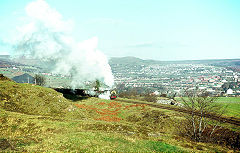
'Islwyn' near Rhiw Frank, 1969
|
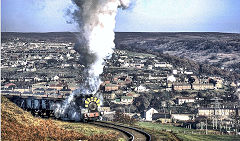
'Islwyn' near Rhiw Frank, 1969
|
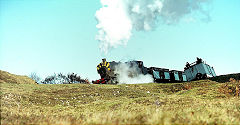
'Islwyn' near Rhiw Frank, 1969
|
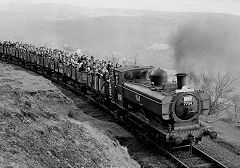
'7754' near Rhiw Frank, 1970
|
Cwm Nant Ddu
The railway heads up Cwm Nant Ddu, past Llanerch Colliery and on to Blaenserchan Colliery.
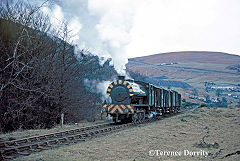
'Llewellyn' in Cwm Nant Ddu
|
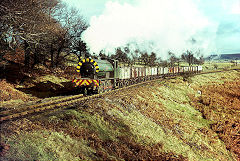
'Llewellyn' in Cwm Nant Ddu
|
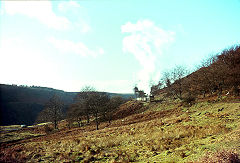
'Llewellyn' in Cwm Nant Ddu
|
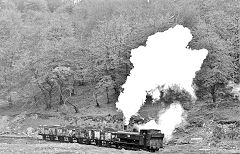
'7754' in Cwm Nant Ddu, 1969
|
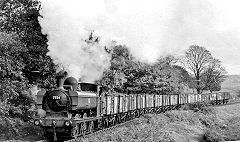
'7754' in Cwm Nant Ddu, 1969
|
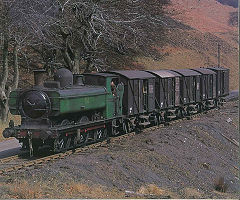
'7754' in Cwm Nant Ddu, c1969
|
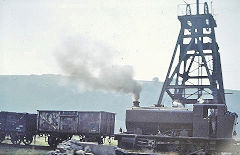
'Illtyd' or 'Islwyn' at Llanerch Colliery
|
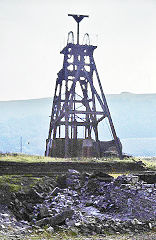
Llanerch Colliery
|
Acknowledgments, sources and further reading.
Thanks to :- Walter Clough, Andy Coldridge, Chris Down, Dennis Hopkins, Walt Jabsco, Richard Morgan,
Random Railways, Alan Murray-Rust, Cliff Shepherd, Mike Roach, Steve Thomas and Dave Wilson for their photos.
Gwyn and Simon Jenkins and Jill Jones for their company.
'Industrial Locomotives of Gwent', Geoffrey Hill and Gordon Green, Industrial Railway Society, 1999.
Gwent Local History Journal Nos 42, 54 and 87







